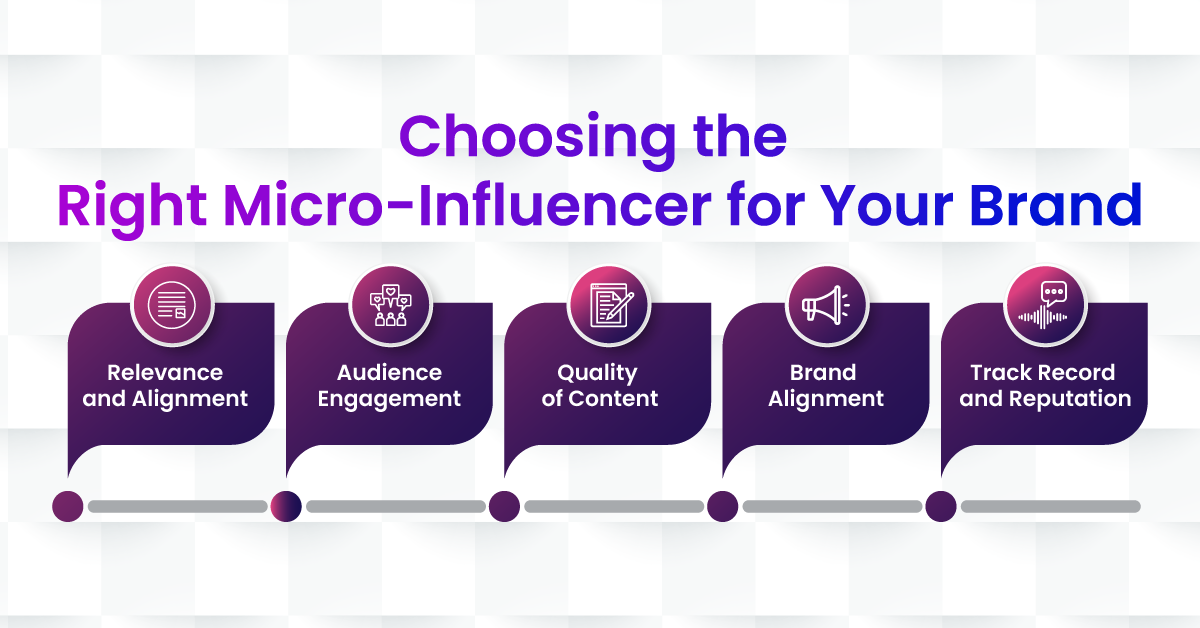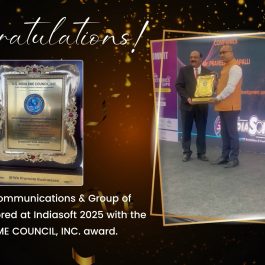5 min read

In recent years, the marketing landscape has witnessed a significant shift with the emergence of micro-influencers. These individuals, with a modest yet highly engaged following, have become a powerful force in shaping consumer behavior and brand perception. In this blog post, we will explore the role of micro-influencers in modern marketing strategies and how they are reshaping the industry. We will delve into their unique advantages, the strategies brands can employ to leverage their influence, and the impact they have on consumer trust.
Table of Contents
Micro-Influencers
Micro-influencers are individuals who have a relatively small but dedicated following on social media platforms, typically ranging from 1,000 to 100,000 followers. Unlike macro-influencers, who have millions of followers, micro-influencers often specialize in niche topics or industries. Their content tends to be more authentic, relatable, and focused on specific interests, making them highly influential among their followers.
The Benefits of Collaborating with Micro-Influencers
Collaborating with micro-influencers offers several key advantages for brands:
- Higher Engagement Rates: Micro-influencers tend to have a more engaged audience compared to macro-influencers. Their followers trust their recommendations and actively engage with their content through likes, comments, and shares.
- Authenticity and Trust: Micro-influencers are perceived as more authentic and trustworthy due to their niche expertise and close relationship with their followers. Their recommendations feel genuine and are not overshadowed by commercial interests.
- Cost-Effective Partnerships: Collaborating with micro-influencers is often more cost-effective than working with macro-influencers. They typically charge lower fees or may even accept product collaborations or affiliate partnerships.
Examples of Successful Micro-Influencer Campaigns
Several brands have successfully harnessed the power of micro-influencers to drive brand awareness and increase sales. Let us examine two noteworthy instances:
- Watch Company “A”: The watch brand collaborated with numerous micro-influencers who shared their love for minimalist fashion and accessories. These influencers posted high-quality images featuring Company “A” watches and offered discount codes to their followers. The campaign resulted in a significant boost in brand visibility and sales.
- Beauty Company “B”: This beauty brand leveraged micro-influencers to create buzz around their products. They sent free products to a select group of micro-influencers who then shared their honest reviews and tutorials on social media presence. These authentic recommendations resonated with their followers, leading to increased brand loyalty and conversions.
Strategies for Effective Micro-Influencer Marketing
To make the most of micro-influencer collaborations, brands need to develop effective strategies tailored to this segment. Here are some key strategies for successful micro-influencer marketing:
Define Clear Objectives
Before partnering with micro-influencers, brands must define their objectives for the campaign. Whether it’s increasing brand awareness, driving website traffic, or boosting sales, having clear goals will help guide the selection process and measure the campaign’s success.
Identify Relevance and Compatibility
To ensure a successful collaboration, brands should identify micro-influencers whose audience aligns with their target market. Analyzing the influencer’s content, engagement rates, and follower demographics will help determine if there is a strong fit between the brand and the influencer’s niche.
Build Genuine Relationships
Building genuine relationships with micro-influencers is crucial for long-term success. Brands should approach influencers as partners rather than just another marketing channel. Engaging in meaningful conversations, providing personalized support, and valuing their input will foster loyalty and commitment from influencers.
Encourage Authentic Content
Authenticity is key when working with micro-influencers. Rather than providing strict guidelines or scripts for sponsored content, brands should allow influencers creative freedom to incorporate their personal style and voice into their recommendations. This approach ensures that the content feels genuine and resonates with the influencer’s audience.
Track and Measure Results
Tracking the performance of micro-influencer campaigns is essential for evaluating their impact. Brands should utilize tracking tools to measure key metrics such as engagement rates, click-through rates, and conversions. This data will provide valuable insights for future campaigns and help optimize marketing strategies.
The Impact of Micro-Influencers on Consumer Trust
One of the significant advantages of micro-influencer marketing is its ability to build trust among consumers. Let’s explore how micro-influencers influence consumer trust:
Relatability and Authenticity
Micro-influencers are relatable figures who often share personal stories, experiences, and recommendations based on their expertise. As a result, their followers perceive them as genuine individuals rather than polished celebrities or influencers with commercial motives. This relatability fosters trust among consumers.
Niche Expertise
Micro-influencers typically have a deep understanding of their niche industry or topic. Their expertise and passion shine through their content, making them highly credible sources of information. Consumers trust their recommendations because they perceive them as knowledgeable insiders.
Engaging with Followers
Micro-influencers tend to have a more intimate relationship with their followers compared to macro-influencers. They actively engage by responding to comments, answering questions, and fostering conversations within their community. This level of interaction creates a sense of trust and loyalty among followers.
Transparency in Sponsorships
Micro-influencers are often transparent about sponsored collaborations, clearly disclosing when content is sponsored or contains affiliate links. This transparency helps maintain trust between influencers and their audience by ensuring that recommendations are not disguised advertisements.
Read More: Enhancing Brand Engagement through Micro-Influencer Marketing
Choosing the Right Micro-Influencer for Your Brand
Selecting the right micro-influencer for your brand requires careful consideration. Here are some key factors to consider when choosing a micro-influencer:

Relevance and Alignment
Ensure that the micro-influencer’s content aligns with your brand’s values, industry, or target audience. Analyze their previous collaborations to see if they have worked with similar brands or products.
Audience Engagement
Evaluate the influencer’s engagement rates by examining the number of likes, comments, and shares they receive on their posts. High engagement rates indicate an active and involved audience that trusts the influencer’s recommendations.
Quality of Content
Assess the quality of the influencer’s content, including the visual appeal, storytelling ability, and overall aesthetic. High-quality content demonstrates professionalism and can positively impact your brand’s perception.
Brand Alignment
Consider whether the influencer’s personal brand aligns with your brand’s image. Look at their values, tone of voice, and overall online presence to ensure that there is coherence between your brand and theirs.
Track Record and Reputation
Research the influencer’s track record by reviewing past collaborations and testimonials from other brands they have worked with. Look for influencers who have a positive reputation for professionalism, reliability, and authenticity.
The Future of Micro-Influencer Marketing
As we look ahead, micro-influencer marketing is poised to continue its growth and evolve further in the coming years. These forecasts for the future are as follows:
Increased Demand for Authenticity
Consumers are becoming increasingly discerning when it comes to sponsored content. They look to people they can trust for sincere recommendations. To keep the trust of their consumers, brands will have to put authenticity first when working with micro-influencers.
Rise of Nano-Influencers
Nano-influencers, individuals with even smaller followings ranging from 500 to 5,000 followers, are gaining traction in the marketing world. These influencers often have an even more engaged audience due to their close-knit communities. Brands may explore partnerships with nano-influencers to tap into these highly targeted audiences.
Embracing User-Generated Content (UGC)
Micro-influencers often inspire their followers to create user-generated content related to a brand or product. Brands will increasingly leverage UGC as a way to build trust and engage with their audience authentically.
AI-Driven Influencer Marketing Platforms
As influencer marketing continues to grow, artificial intelligence (AI) will play a larger role in discovering, analyzing, and managing micro-influencer campaigns. AI-driven platforms will help brands streamline the process of finding suitable influencers based on various parameters.
Conclusion
Micro-influencer marketing has emerged as a powerful tool for brands seeking genuine connections with consumers in today’s digital age. Their relatability, authenticity, and niche expertise make them valuable partners in driving brand awareness, building trust, and increasing conversions. By understanding the unique advantages of micro-influencers and implementing effective strategies, brands can harness their influence to stay ahead in modern marketing. As the industry continues to evolve, embracing micro-influencers will be essential for brands looking to establish meaningful connections with their target audience.
Published: January 10th, 2024








